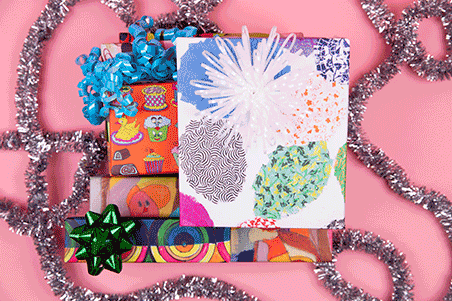He didn’t know if it was art, but he knew it was what he liked
- Share via
At the lowest point in his creative life, Charles Daugherty glued some slabs of wood together, sawed them into roughly the shape and size of his cat and, after weeks of fussing over the finish, finally drew the cat’s fur with colored pencils.
“And then I sat around worrying about if it was art,” said the Pomona College art teacher whose specialty is drawing.
The cat, and Daugherty’s four subsequent life-sized and lifelike wood sculptures, now are on exhibit in galleries and the relieved artist knows he has finally broken the creative block that gripped him for several years.
In the five years since he began experimenting with the cat sculpture, Daugherty has used the same unusual sculpting and penciling process to produce life-sized figures of a goat, his wife, Terry, a dog and a kind of pig known as a collared peccary.
The last three are on exhibit at the Montgomery Gallery at Pomona College in Claremont. The cat and goat are in the “Holiday Group Exhibition” at the Heritage Gallery in Los Angeles.
The sculptures have won several awards, including a first-place at the 33rd Annual National Juried Art Exhibit of the Art Institute in San Diego. The work is included in this year’s catalogue of “Artquest ‘87,” a show judged by eight directors of museums and galleries all over the country.
Until the professional recognition that came earlier this year, Daugherty, 56, said he was not sure that his unique work would qualify as fine art.
“It all came so slow,” he said. “It was hard to throw myself into it because I wasn’t sure where this was going. My friends said it was good, but that’s like your mother talking, and you say, ‘Yeah, sure.’ But you’re not sure. I just knew I loved every phase of the work and I would have kept on with it, no matter what.”
To Noel Korten, director of the USC Atelier Gallery in Santa Monica, Daugherty’s sculptures definitely qualify as fine art.
“People were enthralled and thought they were fabulous,” Korten said of the figures that were exhibited in February in the gallery, which is affiliated with USC’s School of Fine Arts. The show was called “Some Serious Humor.”
“The humor comes from the expression on their faces,” Korten said. “All of them have a kind of Mona Lisa smile that animates them: introspective, reflective, but with an amusing quality.”
Daugherty’s sculpture of the collared peccary, a pig so lifelike that it appears to be in motion, took, he figures, three to four months, including at least 100 hours for penciling the fur. The finishing details--the “intense surfaces”--is the reason Daugherty said he chose his subjects.
“I chose the pig because of its surface. At first glance, when you see these animals, the bristly hair looks like feathers,” he said.
To find a model for the collared peccary, which is native to Mexico and hard to locate in zoos, Daugherty said he had to track down a taxidermist who led him to a peccary that he had completed for Citrus College.
The figure of Daugherty’s wife, Terry, is by far the most complicated and took the artist about 1,400 hours to complete. Much of that time was spent in the fine detail of re-creating the fabric of her jeans and Mexican peasant jacket.
Daugherty said he has always loved working with wood and admired folk art, especially some of the wood carvings of Mexico.
He was in a long unproductive period, he said, after working many years as an artist and teacher, when he started experimenting with the cat sculpture. He refined his technique with each piece, laminating one-inch boards in the basic form, then inserting limbs. He uses a chain saw to shape each figure, then applies a gesso finish, on which he paints and then draws with colored pencils.
Daugherty said his next works will be a self-portrait and a greyhound dog. He does not intend to exhibit again until he has a larger body of work.
“One of the main concerns of the artist should be portraying something that is completely unique to himself,” he said. “I think these are identifiable with me and I have created something that is art. That’s what being an artist is all about.”
More to Read
The biggest entertainment stories
Get our big stories about Hollywood, film, television, music, arts, culture and more right in your inbox as soon as they publish.
You may occasionally receive promotional content from the Los Angeles Times.










